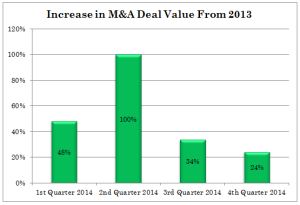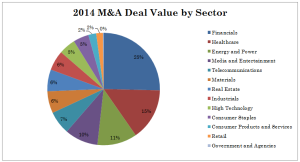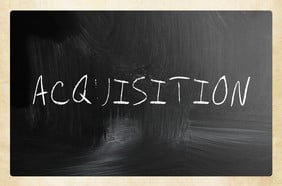
Deciding whether to sell a business is often a difficult decision for an entrepreneur to make, particularly the first time seller. Over the years, we have found that entrepreneurs have five fears: legacy, customers, employees, value, and confidentiality.
One common fear entrepreneurs have when deciding to sell a business is the wellbeing of their legacy. Entrepreneurs may be concerned that the sale of their business could mean the end of their product or service or possibly the discontinuation of their company’s legacy. In most cases, buyers are interested in a business for the value its products or services bring to customers or the reputation of the company’s brand. Buying a business simply to remove a competitor is not commonplace and is typically not a good use of funds by an acquiring company. A good financial advisor should be able to identify reputable buyers that will respect the entrepreneur’s legacy. Typically, these buyers will place a higher valuation on the company as they want to leverage the company’s brand.
Entrepreneurs also worry about their customers and how they will be affected by the sale of the company. For many entrepreneurs, the customer has been their main focus throughout the years and they want to ensure these customers will continue to have their needs met. The customer list is an important asset that a buyer is acquiring in a transaction and is often times seen as one of the key areas for potential synergies. Acquiring companies seek to continue great relationships with newly acquired customers in order to sell additional products or services to them and to maintain their own reputation in the marketplace. For these reasons, entrepreneurs should feel confident that their customers would receive the same level of attention and service that they had been provided in the past.
Entrepreneurs worry about the future of their employees, especially those employees who have worked with the company for years or maybe even decades. The thought of co-workers and friends being terminated after an acquisition is terrifying to most business owners. As worrisome as this may seem, the reality of the situation is usually just the opposite. In the middle-market, there are rarely acquisitions in which a company is acquired and the employees are fired. Most buyers are purchasing a business to grow it so they are usually anxious to keep the staff and to add additional employees. In the rare instances when employees of an acquired firm are fired, the buyer will ensure that they receive generous severance packages and may even help these employees find new positions. Buyers do this, as it is important for them to maintain a positive reputation as a responsible buyer. If they do not do that, they risk not being able to acquire other companies.
Another fear of entrepreneurs is that they will not achieve the maximum value for the business they have built. This focus can sometimes lead to sale paralysis during times when the business is growing. Entrepreneurs may think to themselves “my sales have been improving, if I hold off on selling my business for another year or two, perhaps I can get a lot more for my business.” This mentality exposes an entrepreneur to many unforeseen risks. Should sales decline before the start of the sale of the business or during the sale of the business, the valuation of the company will be significantly reduced as buyers like to see positive trends and are willing to pay in the present for future cash flow. To solve this dilemma, an entrepreneur’s financial advisor would structure and negotiate an “earn-out” to the deal structure that will reward the entrepreneur with future cash payments should the business meet performance thresholds. With this type of mechanism in place, entrepreneurs do not have to worry about not receiving “credit” for future performance. It also eliminates the risk of a reduction of value should the business have a sales decline before or during the sales process.
Lastly, entrepreneurs worry about sharing confidential information during the sales process. While this fear is certainly understandable, in many cases it is blown out of proportion. An experienced financial advisor can guide an entrepreneur through the sale process in such a way that anonymity of the business for sale is maintained until a potential acquirer has proven itself to be serious and have executed a strict Non-Disclosure Agreement or “NDA.” Such NDA would prohibit the buyer from utilizing any information obtained from the process for purposes other than the sale transaction. It is also important to note that acquiring companies and financial buyers go to great lengths to maintain their reputation as professional buyers, which means that they use confidential information very carefully. Companies that fail to respect confidential information, either before or after executing a Non-Disclosure Agreement, are rarely shown deals by sellers or their financial advisors. This penalty is real!
The best way for an entrepreneur to ease these five fears is by engaging a professional financial advisor in the sales transaction. An advisor with a proven record of accomplishment for obtaining exceptional value and maintaining confidentiality can help an entrepreneur achieve the best possible transaction while mitigating his or her fears, and eliminating the risks related to selling the company.


















